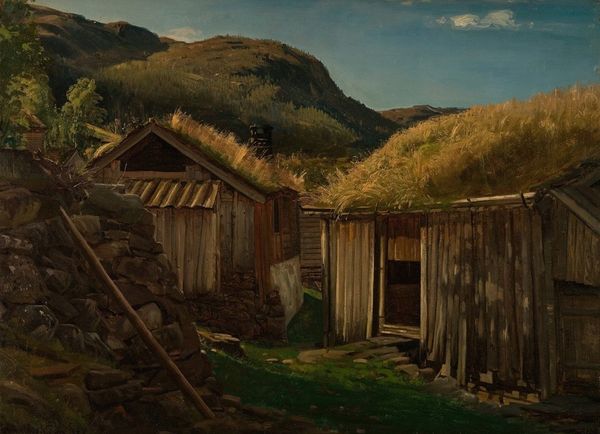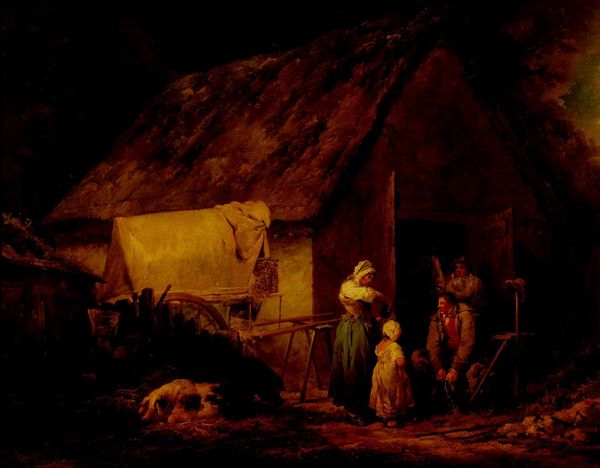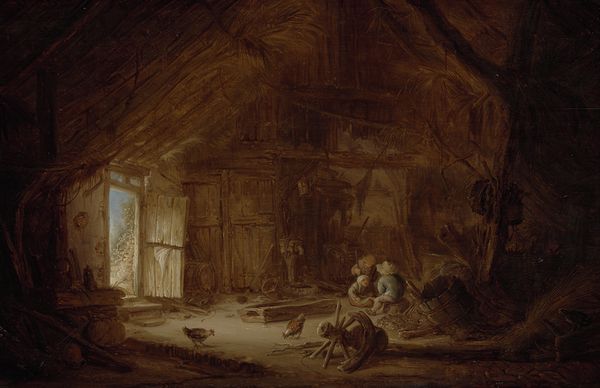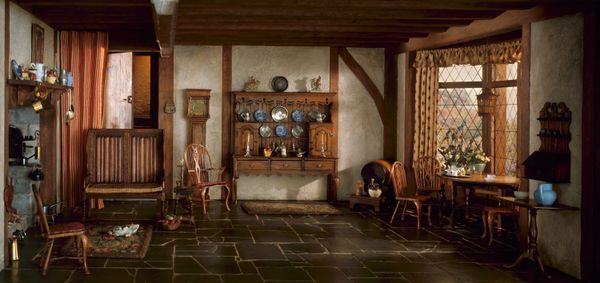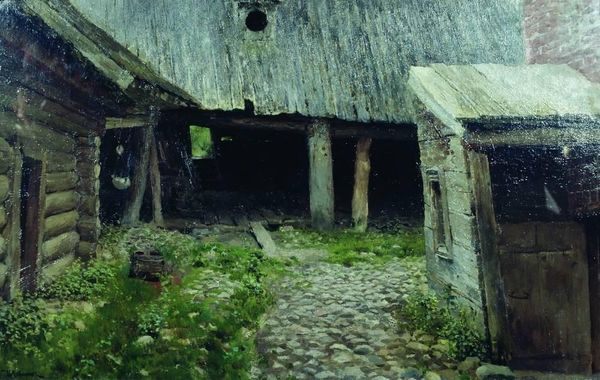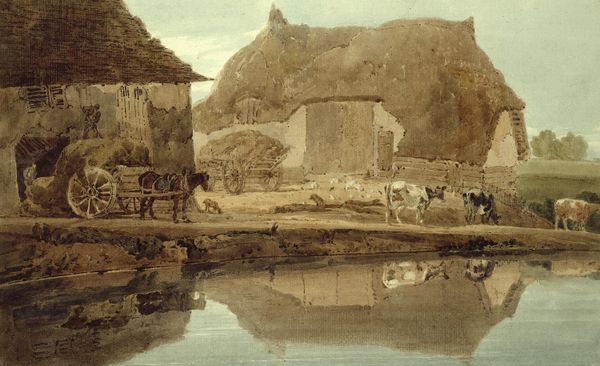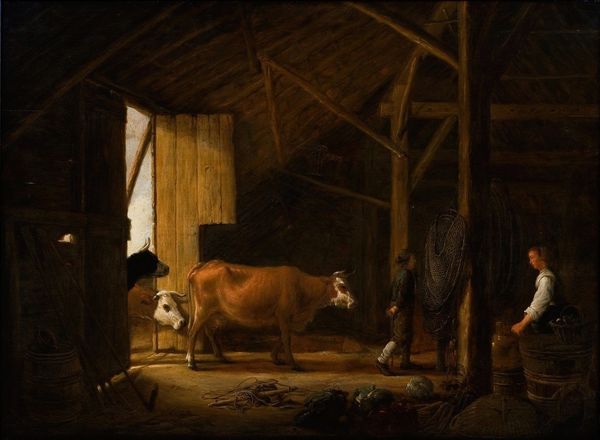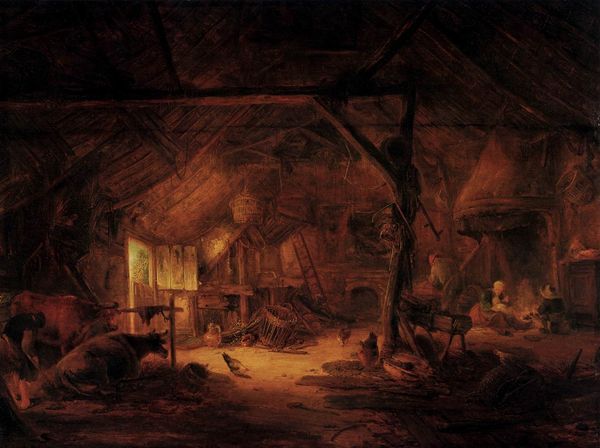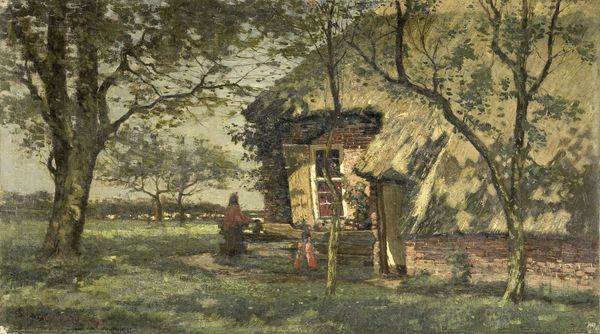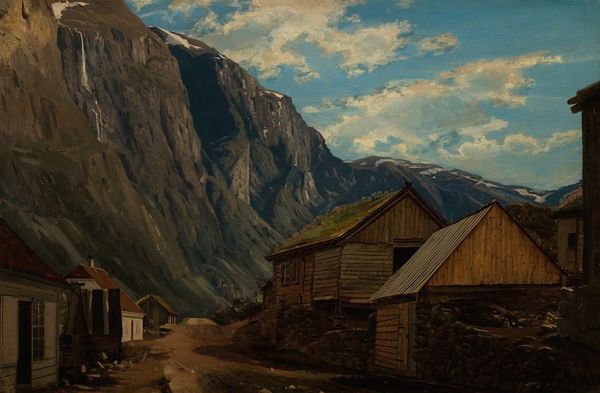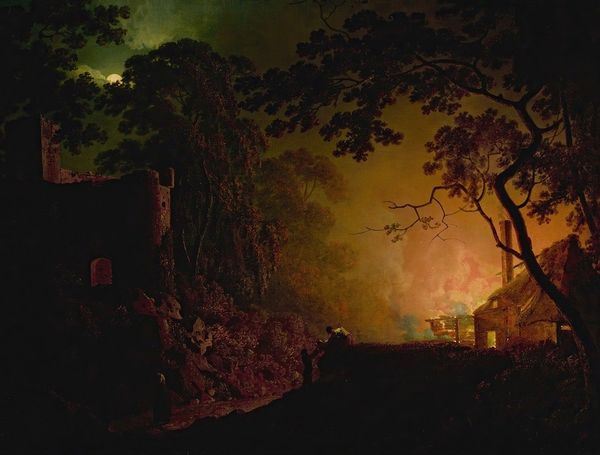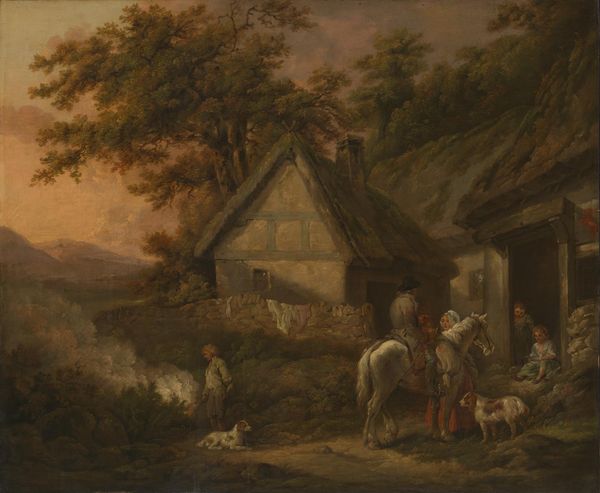
painting, oil-paint, canvas
#
dark place
#
abandoned
#
painting
#
oil-paint
#
deep shadow
#
landscape
#
canvas
#
derelict
#
dark environment
#
gloom
#
genre-painting
#
bleak
#
murky
#
realism
#
ruin
#
deserted
Dimensions: 23.5 cm (height) x 28.5 cm (width) (Netto)
Curator: Good morning. Today, we’re looking at Frederik Vermehren’s painting, "Det indvendige af en bondegård," created around 1865. It translates to “The Interior of a Farmhouse." Editor: Well, "interior" is certainly a generous word. It strikes me as incredibly dark, almost oppressive. All these shadowed areas make the scene feel rather bleak, like it has been abandoned to time. Curator: That darkness is intentional. Vermehren, a key figure in Danish Realism, often used muted palettes to depict rural life without romanticizing it. The gloom emphasizes the harshness and isolation that many faced. His engagement with Realism reflects broader cultural shifts— a desire to present life as it truly was rather than through rose-tinted lenses. Editor: The materiality here is interesting. Notice the rough textures he achieved with the oil paint— especially evident in the crumbling plaster and thatched roofs. You can almost feel the dampness. And the chickens scratching about feel utterly ordinary against this backdrop of slow decay. It’s about representing the mundane labor involved with these farms. Curator: Indeed, he’s grounding the everyday into a wider conversation about class. Genre paintings like these gained popularity as urbanization increased. These works are a look back to an idealized agrarian society that was actually far from idyllic. Editor: The artist’s choice of subject speaks volumes, literally. Even these chickens seem to blend into the ruinous environment. There seems to be an interest to document how people exist with their work, culture and environment. This has implications of production in its wider role in art, beyond beauty. Curator: Absolutely. Vermehren exhibited widely, gaining recognition for precisely these honest, unflinching portrayals. He understood the power of the canvas to reflect, and shape social perceptions. Editor: Makes you wonder who used to labor away in this space, and how consumption habits and global shifts affected their day-to-day routines. Art about the means of production is what I appreciate most. Curator: His use of shadows directs attention. By leaving areas obscured, it subtly invites viewers to confront the unvarnished realities of rural life, stimulating thought about societal and financial issues affecting people. Editor: So next time when walking through this hall, viewers can engage beyond the formal aspects of Vermehren's technique by looking closer into everyday rural spaces of his era. Curator: I think so too. And hopefully consider the narrative behind those shadowy spaces.
Comments
No comments
Be the first to comment and join the conversation on the ultimate creative platform.
